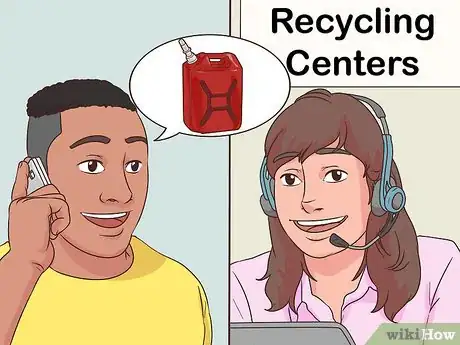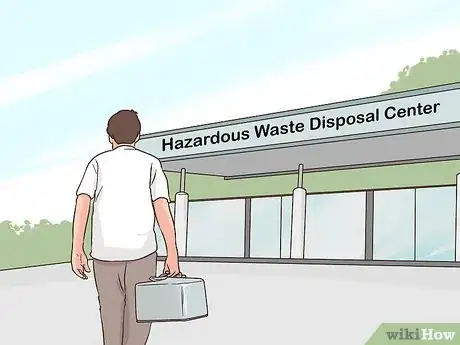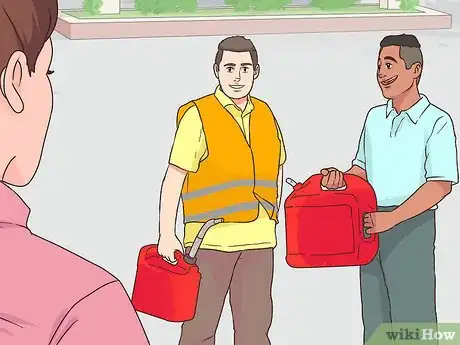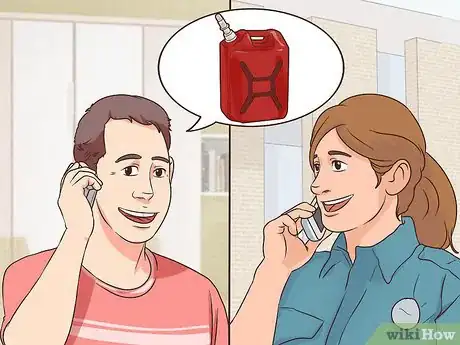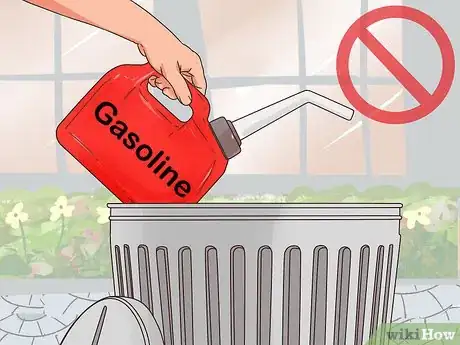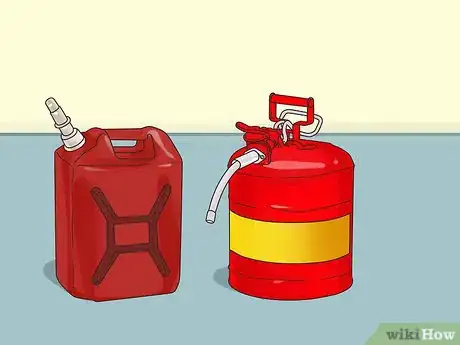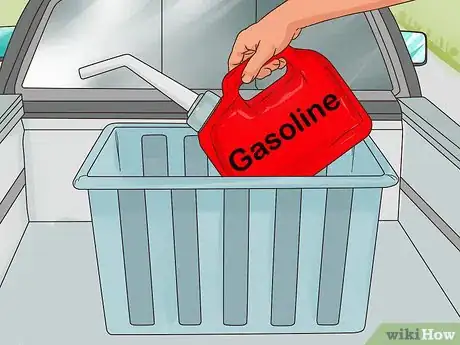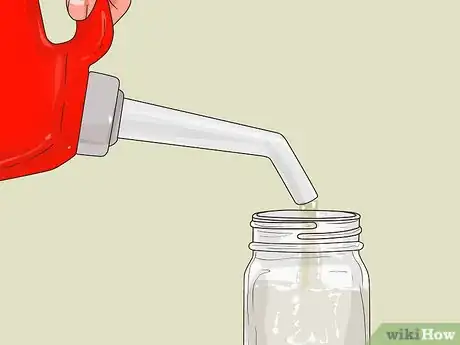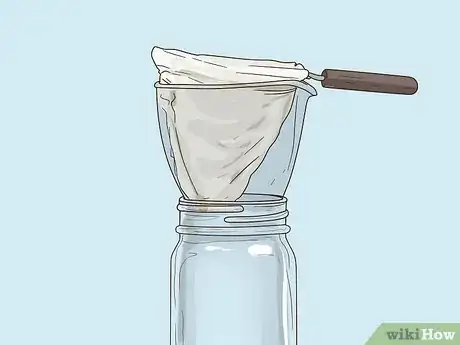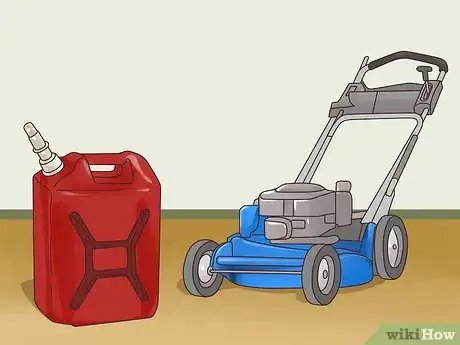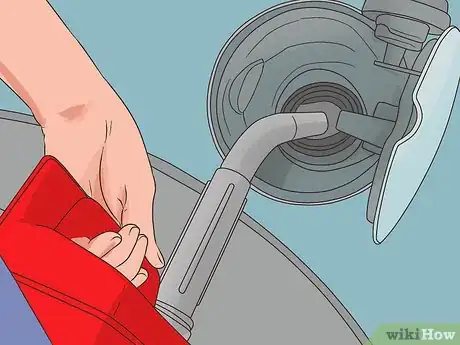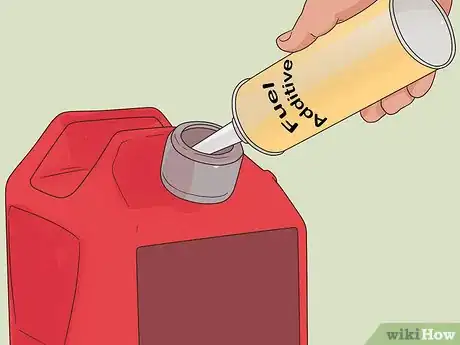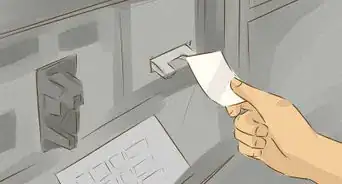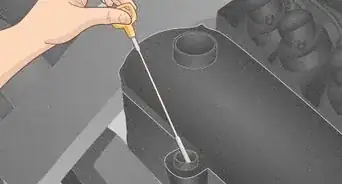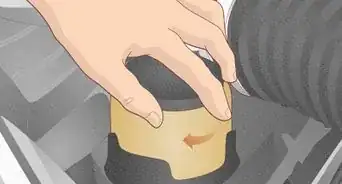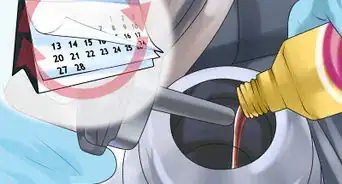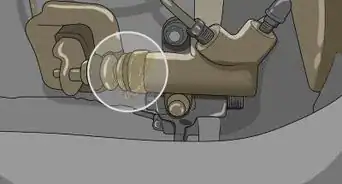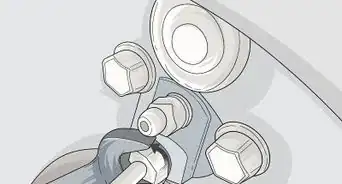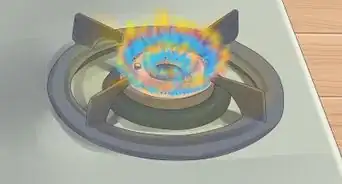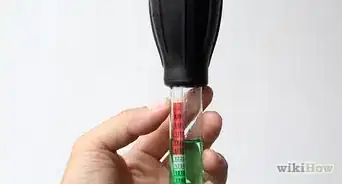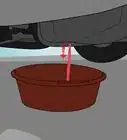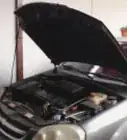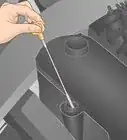This article was co-authored by wikiHow Staff. Our trained team of editors and researchers validate articles for accuracy and comprehensiveness. wikiHow's Content Management Team carefully monitors the work from our editorial staff to ensure that each article is backed by trusted research and meets our high quality standards.
There are 7 references cited in this article, which can be found at the bottom of the page.
This article has been viewed 295,523 times.
Learn more...
If you’ve got excess gasoline you need to get rid of, you may be wondering how to dispose of it. To safely get rid of your old gas, reach out to your local government authorities for direction. Depending on where you live, you may be able to take it to a recycling center, hazardous waste disposal site, auto parts store, or fire department. In this article, we’ll cover every possible scenario and provide info on how you can safely transport the gas to get rid of it.
Steps
Selecting a Disposal Location
-
1Contact your local recycling authority. Some recycling centers will accept gas and recondition it or recycle it safely. Your city’s government officials should be able to direct you to the right recycling place. Then, call the recycling location in advance to see if they have any particular instructions that you’ll need to follow.[1]
-
2Take it to a hazardous waste disposal center. This is slightly different than recycling because a waste center will usually dispose of, not repurpose, your gasoline. You can still talk with local government management to determine where a waste disposal site is near you. Call ahead to find out restrictions, operating hours, and what they’ll accept.[2]
- Some hazardous waste disposal centers are free only to citizens from a particular area, with outsiders forced to pay a fee for disposal.
- In less populated areas, your local waste disposal may only be open very limited hours. This is another reason to call ahead.
- Centers may also have a maximum amount of gas, such as 10 gallons (37.9 L), that they will accept in a single visit or from an individual over a particular time period.
Advertisement -
3Pay for a disposal service. If you have a large amount of gasoline to get rid of or if there aren’t other options in your area, you may need to pay for a private disposal service. Find one of these businesses by entering “private hazardous waste disposal” and your location into a search engine. Ask about their fees when you call. You should also check that they are licensed by local authorities.[3]
- These types of services can be costly, however, they are much cheaper than paying a fine for hazardous dumping.
-
4Attend a community collection event. To encourage citizens to safely dispose of waste, many cities hold regularly scheduled recycling and disposal events. They usually publish a list of the details as well as the accepted materials, such as gas, well in advance. To find out if this is an option for you, reach out to your local government.[4]
-
5Ask your local fire department for guidance. Many fire departments are willing to dispose of your gasoline for you or suggest a location that will help you safely get rid of it. Fire departments can also offer suggestions regarding the safe storage and transport of old gasoline.[5]
-
6Drop it off at an auto repair or auto parts shop. Many automotive shops are willing to take in used, hazardous auto fluids. Some of them only accept oil or transmission fluids, whereas others are willing to take pretty much anything, including gas. Call around to see which shops in your areas are willing to help you.[6]
- Be aware that these shops will usually dispose of your gas for free without requiring you to pay a fee or make a purchase.
-
7Don’t discard it in the trash, disposal, or drain. It’s illegal in most places to dump gas in a way that endangers public health. Gas that goes into storm drains, for example, can potentially contaminate water sources used by humans and wildlife. If you don’t have time to properly dispose of gas, it’s better to simply leave it at your home (in safe containers) until you are ready to do it right.[7]
- The penalty for illegally disposing of gas can be steep, including jail time or hefty fines.
Handling the Gasoline for Disposal
-
1Transfer the gas to an approved container. If you are taking your gas somewhere for disposal, then you’ll need to transport it in an airtight container for safety. Most plastic or metal gasoline cans, especially the 5-gallon models, are designed for the safe, quick transport of gas. Funnel your old gas into these containers and seal them tightly before moving them.[8]
-
2Set the containers in a bin. To keep your gas containers from tipping over while you are driving, set them inside a large plastic tub or bin. This will keep your car clean and will lessen the possibility of getting any gas on your skin as well. Wash out the bin with water when you’ve disposed of the containers.[9]
-
3Leave your containers behind or carefully pour the gas out. When you arrive at a disposal facility, they might need to take your containers along with the gas. This means that you’ll be out the cost of the containers, but you’ll save on a possible fine. Or, they may have a large tank that you can pour your gasoline into, allowing you to keep your cans.[10]
Using Old Gas Instead
-
1Pour some in a glass to check its quality. Get a glass mason jar or other clear container. Use a funnel to fill up the glass part of the way with the gas. Swirl the glass around to see if there is any sediment at the bottom. Look at the color of the gas to see if it is darker than normal. Also, notice if the gas emits a particularly foul, rotten odor. These are all signs that the gas is ruined and not worth reconditioning.[11]
- It’s important to toss damaged gas because it can gunk up an equipment’s fuel lines or cause other problems, even if diluted.
- Do not use a drinking glass. The glass that you use should be designated just for gas tests and nothing else.
-
2Recondition your gasoline. Place a funnel with a coffee filter at the bottom into the opening of a container. Carefully pour your old gas into the funnel. The filter will help to catch any particles. Then, you can add the gas into lawn equipment or your vehicle. Just mix 1 part of old gas in with at least 5 parts new gas.[12]
- If you don’t have a coffee filter handy, you can also use 2 pieces of thin cloth as a filter. Just drape the cloth over the entire funnel, pushing it slightly into the center, and then slowly pour the gas into the middle.
-
3Fill up an outdoor device with it. If you have gas that is old, but otherwise good, go ahead and recondition it and put it to work inside a piece of lawn equipment. It will still fire an engine, but be prepared to get less efficient use out of this mixed tank of gas.[13]
-
4Mix it with fresh gas in your car. You can also add filtered (but not mixed) gas directly to your tank using a “jerry can” (a gas container with an angled spout). For a tank that holds between 9–10 gallons (34.1–37.9 L), you can safely add a half-gallon at a time until the tank shows full. For a tank that holds 11 or more gallons, you can add the gas in intervals of ¾ gallon until full.[14]
- You can tell when your tank is full by watching the metal safety valve in your gas tank. When you start to see any signs of gasoline at the valve, then it’s time to stop.
-
5Pour in a fuel additive. You might also want to add a fuel additive into your tank or into the old gas container. The additive can help to break down any dangerous compounds found in the old gas. Be sure to check with your owner’s manual or talk with a mechanic before doing this, as it’s not a good idea for all engine types.[15]
Community Q&A
-
QuestionWhat do I do if I cannot completely drain all of the gas from the mower tank and the mower doesn't run? Just a little remains. Is there something I could put in the tank to absorb it?
 Community AnswerLeave the cap off the tank and let the mower just sit there for a couple of days. Any remaining petrol will have evaporated away completely by then.
Community AnswerLeave the cap off the tank and let the mower just sit there for a couple of days. Any remaining petrol will have evaporated away completely by then. -
QuestionI am not sure if the gas I have is mixed for a lawnmower or just old gasoline. How could I test it?
 GlahnjCommunity AnswerYou can pour it in a glass and see if it's darker than normal gasoline. This is a quick and easy way to tell.
GlahnjCommunity AnswerYou can pour it in a glass and see if it's darker than normal gasoline. This is a quick and easy way to tell.
Warnings
- Call Poison Control if you accidentally ingest any amount of gasoline. If you get gas in your eyes or skin, rinse it off with water. Seek medical attention after rinsing if the area appears irritated or red.[17]⧼thumbs_response⧽
References
- ↑ http://www.ct.gov/deep/cwp/view.asp?a=2718&q=325496&deepNav_GID=1645%20#G
- ↑ http://www.miamidade.gov/solidwaste/gasoline-disposal.asp
- ↑ https://www.hunker.com/13419107/how-to-dispose-of-gasoline
- ↑ http://www.wm.com/enterprise/municipalities/residential-solutions/household-hazardous-waste.jsp
- ↑ https://www.bobvila.com/articles/how-to-dispose-of-gasoline/#.WeVhkWi3zIU
- ↑ http://www.recyclingnj.com/recycle/autochemicals.html
- ↑ http://www.recyclingnj.com/recycle/autochemicals.html
- ↑ http://www.miamidade.gov/solidwaste/gasoline-disposal.asp
- ↑ https://www.bobvila.com/articles/how-to-dispose-of-gasoline/#.WeVhkWi3zIU
- ↑ https://www.bobvila.com/articles/how-to-dispose-of-gasoline/#.WeVhkWi3zIU
- ↑ https://www.bobvila.com/articles/how-to-dispose-of-gasoline/#.WeVhkWi3zIU
- ↑ http://www.eriecountyrecycles.org/recycling/household-hazardous/gasoline-fuel/
- ↑ https://www.bobvila.com/articles/how-to-dispose-of-gasoline/#.WeVhkWi3zIU
- ↑ https://www.bobvila.com/articles/how-to-dispose-of-gasoline/#.WeVhkWi3zIU
- ↑ http://www.ct.gov/deep/cwp/view.asp?a=2718&q=325496&deepNav_GID=1645%20#G
- ↑ http://www.ct.gov/deep/cwp/view.asp?a=2718&q=325496&deepNav_GID=1645%20#G
- ↑ https://www.bobvila.com/articles/how-to-dispose-of-gasoline/#.WeVhkWi3zIU
About This Article
To dispose of gasoline, contact your local recycling authority or fire department to find out if there’s a recycling center or hazardous waste facility that will take your gasoline. Some auto repair shops will also accept gasoline. Once you find a drop-off location, funnel the gasoline into an airtight container for transport. Place the container in a plastic bin in case it tips over, then drive it to the drop-off location. Never dispose of gasoline in the trash or down a drain since it can contaminate soil and water sources and is illegal in most areas. Keep reading to learn how to recondition gasoline so you can reuse it!
